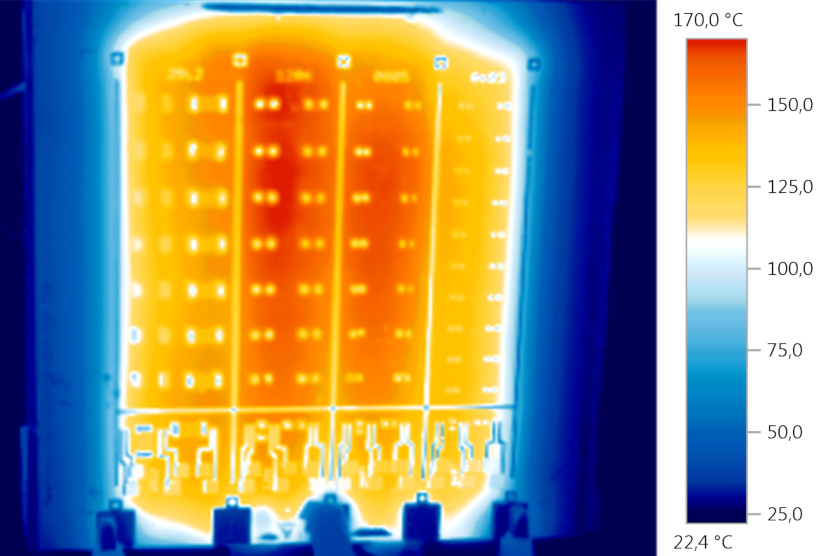
Heating of a test pcb with embedded heating layer
© IGS/Universität Rostock
The energy expenditure in standard convection reflow soldering processes for the industrial manufacturing of electronic assemblies is enormous, yet most of the heat produced in this process is not used: 99,8% of the heat is not produced by the solder paste deposits but by the assemblies themselves or is released into the furnace.
The partners of the research project “Energy and resource-efficient manufactured electronic assemblies (ERFEB)” are seeking to increase the low energy efficiency by integrating heating systems in the circuit carriers. A heating layer over the complete surface is to be embedded in the circuit carrier and is to generate the required heat in the areas it is needed via Joule heating. In theory, the potential savings in energy is 50%. In addition, there are savings in the nitrogen supply and in the surface area needed for the system. However, the heating layer should not only be available for use during the manufacturing process, but also in the subsequent operation of the assemblies and, for example, drying varnishes and condensate or to achieve certain operating temperatures.
In the course of the project initiated at the end of 2017, different materials will be tested and developed with regard to their suitability as a heating layer. Manufacturing tests will be carried out and other areas investigated that might be suitable for application apart from soldering.
The project that is to run for three years is being funded by the Federal Ministry for Economic Affairs and Energy (BMWi) and coordinated by Siemens Corporate Technologies. Apart from the University of Rostock and Neue Materialien Bayreuth GmbH, B & B Sachsenelektronik GmbH, Heraeus Deutschland GmbH & Co. KG and SEHO Systems GmbH are also among the project partners.


